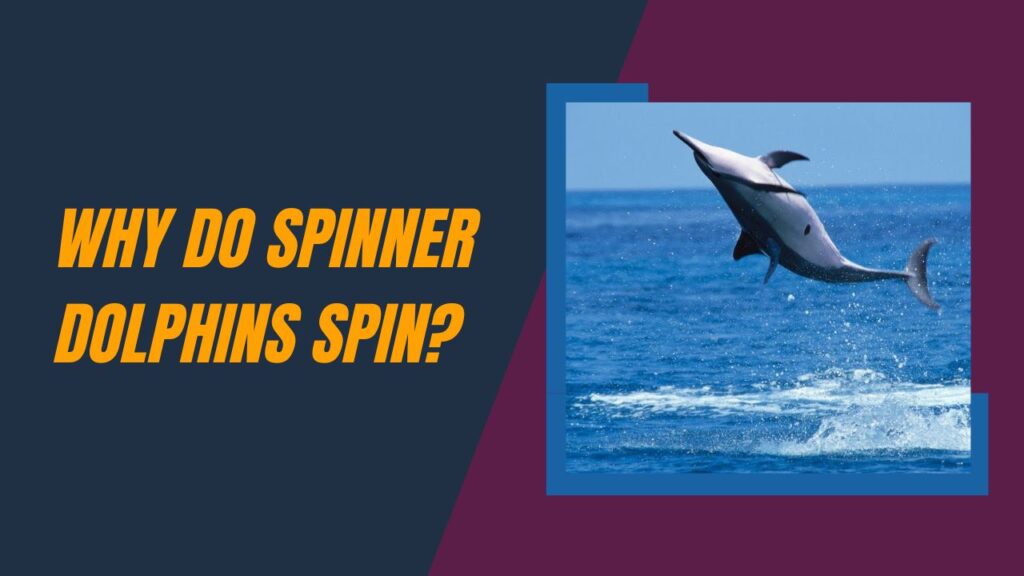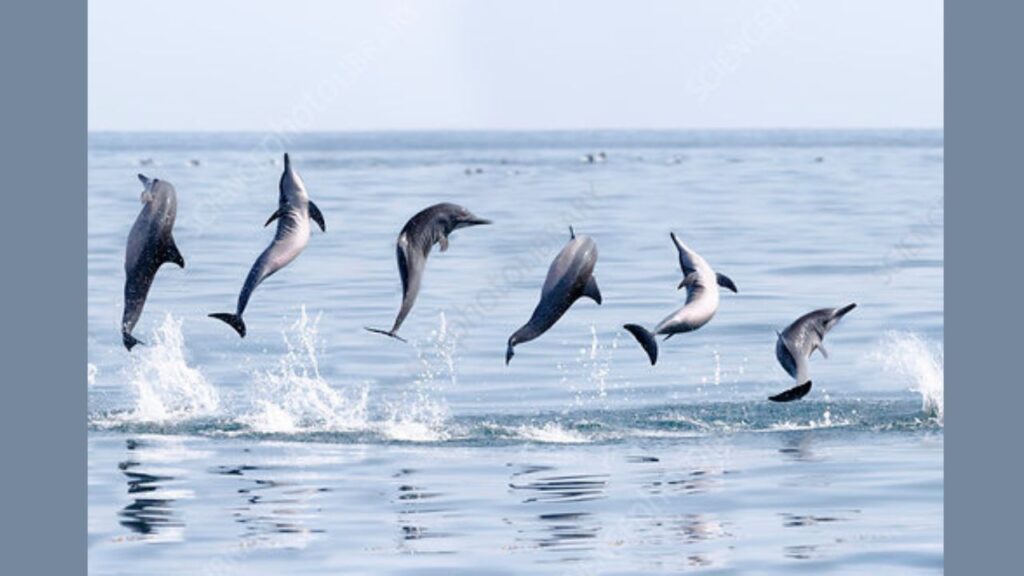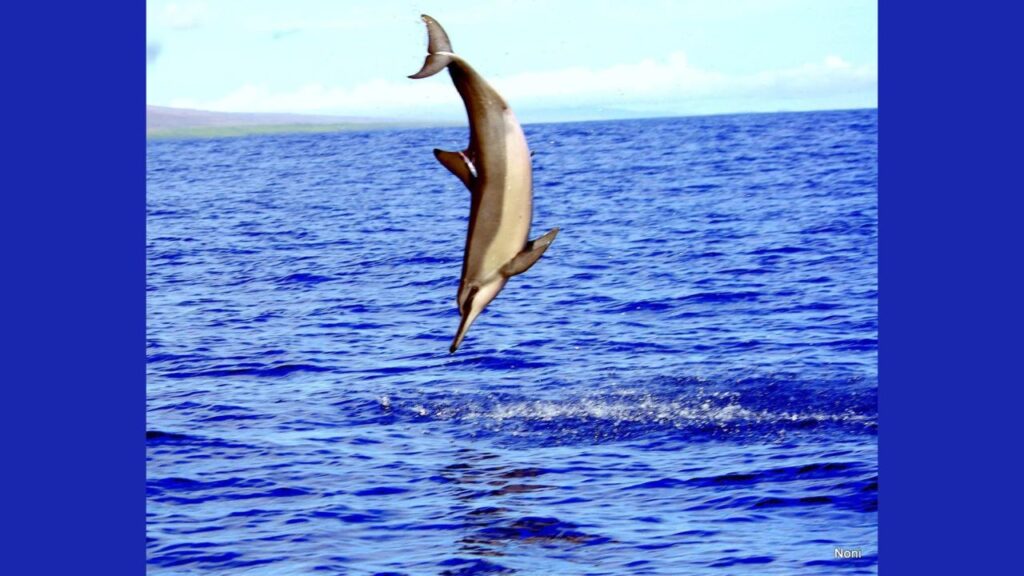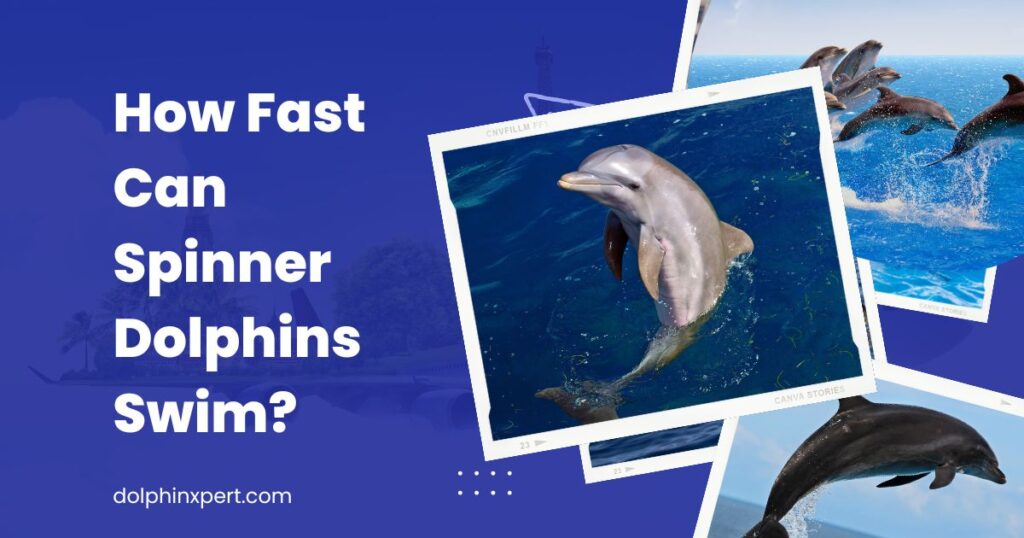
Why Do Spinner Dolphins Spin? Spinner dolphins spin as a form of communication, social interaction, and play, displaying agility and coordination within their pods.
Are you looking to uncover the mesmerizing reasons behind spinner dolphins gracefully spinning in the ocean?
In this blog post, we embark on a journey to unravel the distinctive behavior of spinner dolphins, exploring the factors that drive them to spin with remarkable agility and coordination.
Table of Contents
Social Communication and Bonding
Spinner dolphins utilize spinning as a form of social communication within their tight-knit pods. Each spin conveys a wealth of information about the spinner dolphin’s energy levels, vitality, and overall well-being to other members of the pod.
This visual display serves as a powerful tool for reinforcing social bonds, enhancing cohesion, and facilitating communication among pod members.
Through spinning, spinner dolphins create a dynamic visual language that strengthens the social fabric of their pod, fostering a sense of unity and collective identity.
This behavior is particularly crucial during group activities such as hunting, navigation, and protection against predators, where effective communication and cooperation are essential for success.
By spinning, spinner dolphins communicate their readiness, enthusiasm, and commitment to the collective goals of the pod, ensuring smooth coordination and collaboration among members.
See Also: What Do Spinner Dolphins Do At Night? Mysterious Activities!
Playfulness and Enrichment
Dolphins that spin are engaging in play, displaying an innate feeling of happiness, curiosity, and excitement. [Why Do Spinner Dolphins Spin?]
The dolphins benefit much from this playful activity in addition to being entertained; it gives them important mental and physical stimulation.
They can exhibit their coordination, agility, and flexibility through spinning, which is an exercise that improves their physical health in general.
Additionally, spinning challenges the dolphins’ wits and fosters mental acuity within the pod by providing a source of cognitive stimulation.
Spinner dolphins practice reflexes, spatial awareness, and problem-solving techniques as they playfully spin about, gaining readiness for a variety of obstacles in their aquatic habitat.
This playful behavior also strengthens social bonds within the pod, fostering camaraderie and cooperation among members.
Shared play experiences create opportunities for interaction, communication, and mutual support, further solidifying the close-knit relationships that characterize spinner dolphin pods.
Overall, spinning serves as a vital component of spinner dolphins’ social and cognitive development, enriching their lives and enhancing their well-being within their dynamic marine habitat.
See Also: Are Spinner Dolphins Dangerous? Debunking Common Myths

Parasite Removal and Health Indicators
The spinning motion of spinner dolphins has two functions: it aids in the removal of external parasites from their skin and enhances general hygiene and wellness.
The centrifugal force produced when spinner dolphins spin helps to dislodge parasites that might have adhered to their skin. [Why Do Spinner Dolphins Spin?]
The self-grooming mechanism of dolphins is a crucial aspect of their adaptive behavior in their marine habitat, as it helps them maintain maximum health and prevents parasitic infections.
Moreover, spinner dolphins’ overall health and longevity are enhanced by the efficient removal of parasites, which lowers their vulnerability to illness and infection.
Through natural activities like spinning, dolphins are able to adapt to their surroundings and minimize health risks. This self-care habit is only one example of how amazing this skill is.
See Also: Do Spinner Dolphins Migrate? Fascinating Migration Patterns!
Communication of Energy and Vitality
Spinning serves as a powerful visual indicator of the spinner dolphins’ energy and vitality within their pod. [Why Do Spinner Dolphins Spin?]
The sheer enthusiasm and coordination displayed during spins communicate a message of well-being and high energy levels to other pod members.
This non-verbal communication plays a crucial role in maintaining social harmony and reinforcing the pod’s collective strength.
Spinner dolphins use their ferocious spins to let other dolphins in their pod know that they are excited and ready for anything from hunting to interacting with other dolphins to exploring their underwater home.
In the face of environmental obstacles, the pod’s resilience and adaptation are strengthened by this visual demonstration of vitality, which also promotes a sense of confidence and togetherness among the members.
Furthermore, dolphins may use their vivacious displays as a kind of social signaling, utilizing it to entice possible mates or establish dominance within the pod hierarchy.
Spinner dolphins make significant contributions to the cohesiveness and stability of their social group by demonstrating their energy and vigor through spinning, which fosters effective communication and collaboration among pod members.
See Also: How Do Spinner Dolphins Mate? Dive into Romance

Environmental Influences
Spinner dolphins’ spinning behavior is not solely driven by social or physiological factors but can also be influenced by environmental conditions.
These factors play a crucial role in shaping the frequency and intensity of spinning behavior observed in spinner dolphin populations. [Why Do Spinner Dolphins Spin?]
Understanding these environmental influences offers valuable insights into the broader ecological context in which spinner dolphins thrive.
| Environmental Factor | Influence on Spinner Dolphin Spinning |
| Water Temperature | Spinner dolphins may spin more frequently in response to favorable water temperatures. Warmer waters can increase their metabolic rate and energy levels, prompting more energetic behaviors like spinning. |
| Prey Availability | The presence of abundant prey in their habitat can stimulate hunting behavior in spinner dolphins, leading to increased activity levels, including spinning. |
| Oceanographic Conditions | Oceanographic conditions such as currents, tides, and water clarity may also influence spinner dolphin spinning behavior. These factors can affect prey distribution and movement, impacting the dolphins’ foraging patterns and activity levels. |
| Human Activities | Human activities such as boat traffic, fishing, and coastal development can disrupt spinner dolphin behavior and habitat, potentially affecting their spinning frequency and intensity. |
By examining the interplay between environmental factors and spinner dolphin spinning behavior, researchers can gain a deeper understanding of the complex dynamics that shape their lives in the ocean.
This holistic approach highlights the interconnectedness between environmental conditions and dolphin behavior, emphasizing the importance of conservation efforts to preserve the delicate balance of marine ecosystems.
See Also: How Fast Can Spinner Dolphins Swim? Diving into Speed

Frequently Asked Questions (FAQs)
Why Do Spinner Dolphins Spin?
Spinner dolphins spin as a form of communication, social interaction, and play within their pods. This behavior showcases their agility and vitality while reinforcing social bonds among pod members.
Do Spinner Dolphins Only Spin For Fun?
While spinning is a playful behavior for spinner dolphins, it also serves practical purposes such as parasite removal and communication of energy levels and well-being to other pod members.
What Environmental Factors Influence Spinner Dolphin Spinning?
Spinner dolphins may spin more frequently in response to favorable water temperatures, abundant prey availability, or other environmental cues. These factors can influence their activity levels and energy expenditure.
Is Spinner Dolphin Spinning Harmful To Their Health?
Spinner dolphin spinning is a natural behavior that is not inherently harmful to their health. In fact, it can contribute to their overall well-being by promoting physical exercise, social interaction, and parasite removal.
How Can I Observe Spinner Dolphin Spinning Responsibly?
To observe spinner dolphin spinning responsibly, maintain a respectful distance from the animals, avoid disturbing their natural behaviors, and adhere to wildlife viewing guidelines to minimize any potential impact on their habitat and well-being.
Conclusion: Why Do Spinner Dolphins Spin?
Finally, hopefully, you’ve gained insight into the multifaceted world of spinner dolphins through their enchanting spins.
This unique behavior showcases not only their remarkable intelligence and adaptability but also emphasizes the importance of their social bonds and connection to the marine environment.
As you continue to study and appreciate these graceful marine mammals, you’ll gain deeper insights into their complex and captivating world.

Mr. Das, a certified pharmaceutical scientist, holds a Bachelor of Science in Pharmaceutical Sciences and passionately contributes to dolphin conservation as a member of the committee in Bangladesh.


